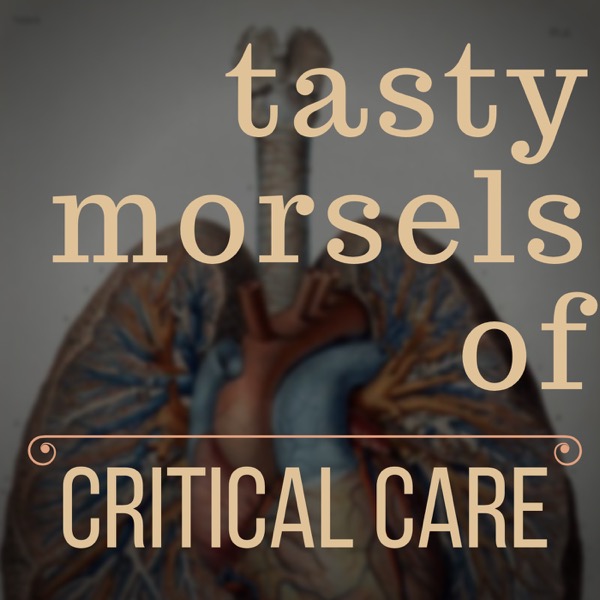Tasty Morsels of Critical Care 069 | Sub Arachnoid Haemorrhage
Tasty Morsels of Critical Care - A podcast by Andy Neill - Mondays

Welcome back to the tasty morsels of critical care podcast. Nestled towards the end of Oh Chapter 51 we have a section dedicated to SAH. Given that a lot of ICU bed days are given over to managing SAH, I felt it might have warranted its own chapter. Indeed, looking at its prevalence in fellowship examinations it does seem that a fair deal of attention should be given to SAH. It stands apart from the usual intracranial bleeding where the typical treatment and discussions are all focussed on supportive care and the the nuance only comes in when you get to BP management. Whereas in SAH you have a whole bunch of interesting and well proven interventions that can improve outcome for the lucky patients who haven’t already prognosticated themselves by presenting with a GCS of 3. As a starter for 10: in which meningeal space in the brain do you find an SAH? The clue, thankfully is in the name. The space between the brain adhering pia matter and the filmy arachnoid matter is where you’ll find an SAH. This is the space that CSF flows in from it’s genesis in the choroid plexi of the ventricles on its journey to reabsorption in the arachnoid granulations. Also in this space lies the cerebral vasculature that has a tendency to become aneurysmal and rupture arterial blood into this space. Blood in the sub arachnoid space is easily seen on a simple dry CT scan, particularly in the first few hours. It has now become a test so good that people would suggest that if you have a negative CT in the first 6 hrs then you probably can skip the de rigeur LP that has been all the rage for the past century. Though i’ll admit that that question is delving much more into the realm of EM than hard core crit care. In a critical care exam type stem you might be faced with someone in their 60s with a history of poorly controlled hypertension, who smokes, takes cocaine and has polycstic kidneys. All of these are identified as risk factors for SAH, though such a combination, i imagine only exists on exams. In the stem they’re likely to have a reduced GCS in the 13-14 range with a BP of somewhere north of 170mmHg. You’ll be given a CT scan showing some diffuse SAH but you’re waiting on an angio etc… Imagine a question like: what are your immediate priorities in management. Given that 85% of SAH is aneurysmal, and they need definitive treatment likely not available in your hospital then getting that angio done is certainly a priority. But probably more acutely will be the basics of assessments of ABCs with particular attention to getting that BP under control. The biggest risk to life in the first few hours is going to be a rebleed which happens in maybe 20% of patients. Getting the BP down to somewhere south of 160 is likely a good idea with the ubiquitous labetalol probably being the most accessible and available option. Avoid the GTN and the foil wrapped madness of nitroprusside as both can cause a little cerebral vasodilation that you want to avoid. Bonus points for a decent analgesic (which will help the pain) and an antiemetic as vomiting does indeed tend to make the BP spike a little. The stem continues and the plot thickens. While waiting for the CT angio the patient becomes obtunded gets intubated (where great attention was paid to the heamodynamics). Now the CT shows more blood, some hydrocephalus and a big posterior communicating aneurysm. What now genius? Hydrocephalus is a relatively common event in SAH and the theory is that blood in the CSF space blocks up the arachnoid granulations preventing reabsorption and with ongoing production and failure to reabsorb you get hydrocephalus. There may be other reasons including a clot in one of the intricate drainage canals in the brain but either way you get more CSF than you want with a conco...
